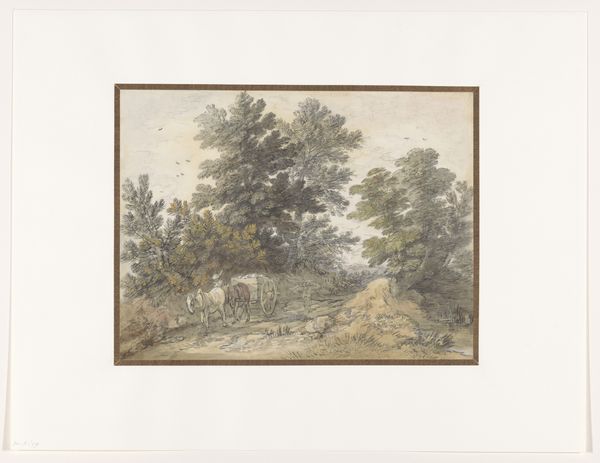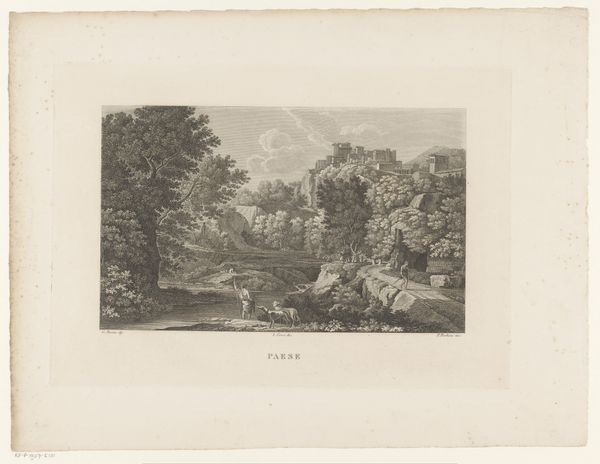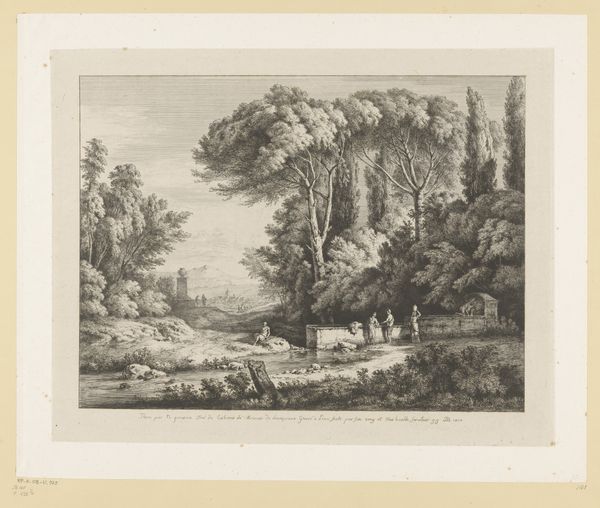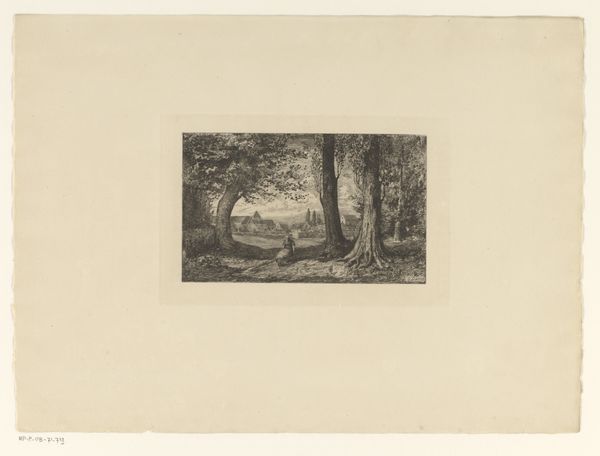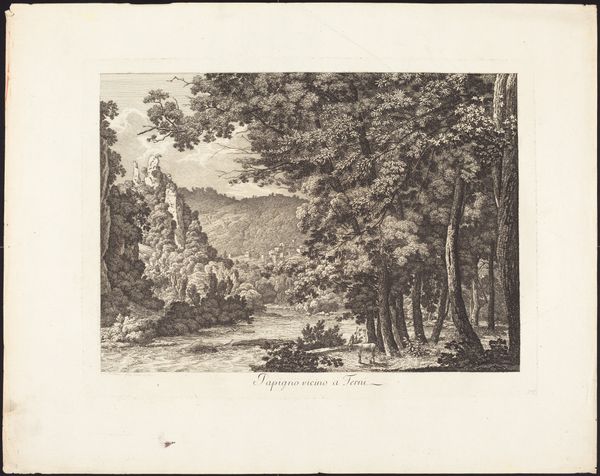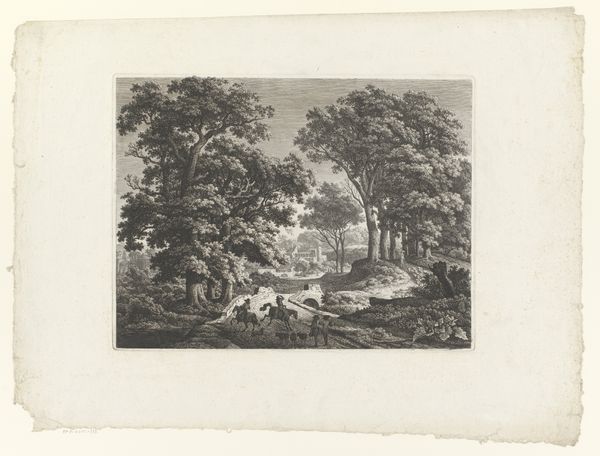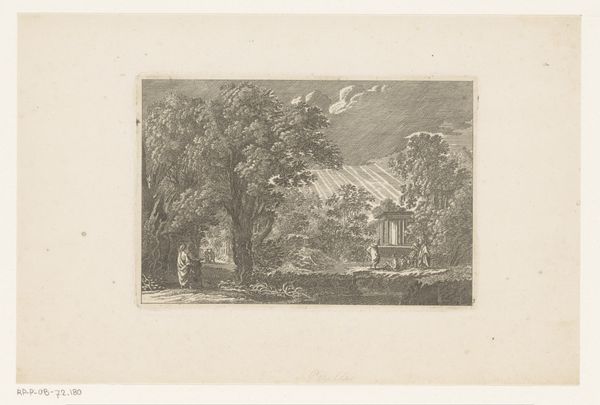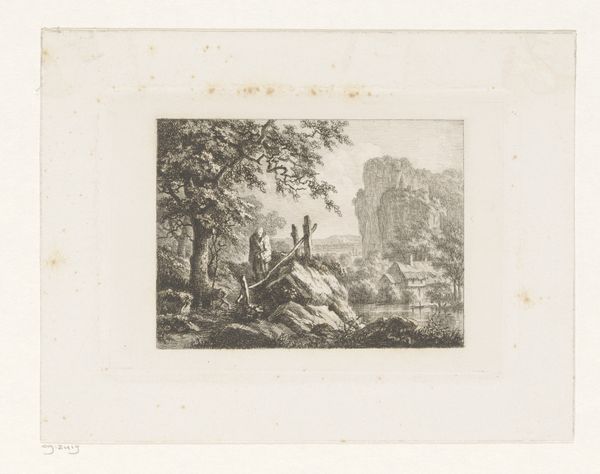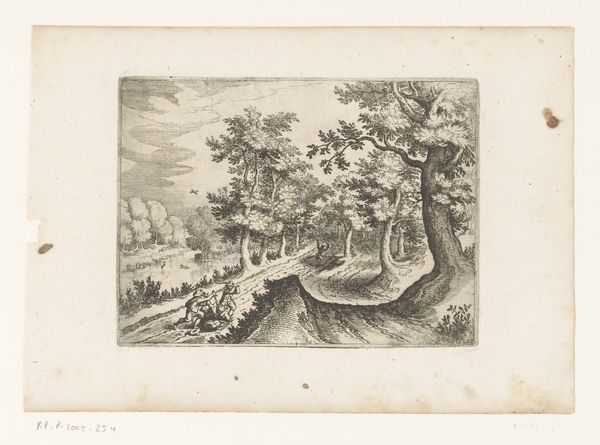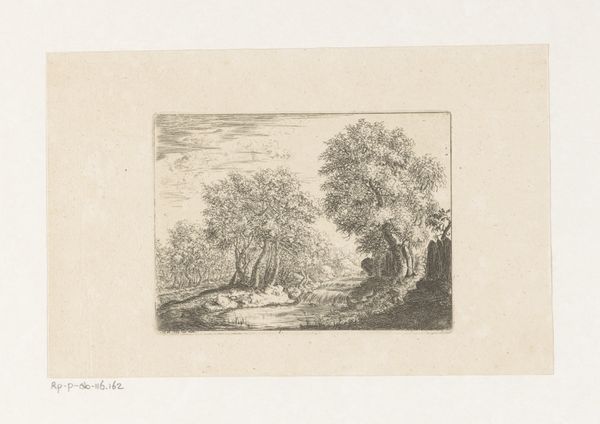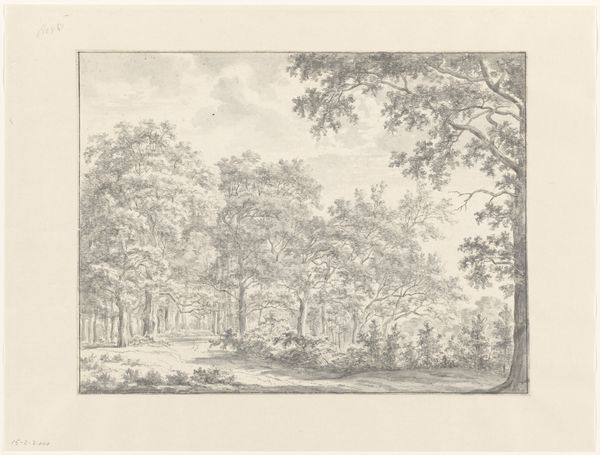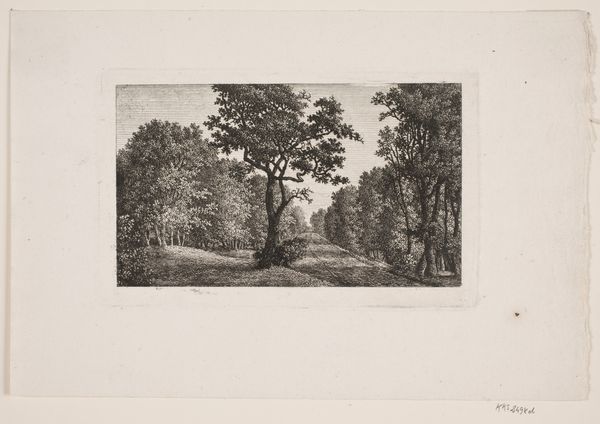
watercolor
#
baroque
#
landscape
#
figuration
#
watercolor
#
watercolour illustration
#
academic-art
#
natural palette
Dimensions: height 259 mm, width 314 mm
Copyright: Rijks Museum: Open Domain
Curator: Jacob van Liender created this work, "Arcadian Landscape with Antique Ruins and Two Men," sometime between 1706 and 1759. Editor: My immediate impression is one of quiet observation. The watercolor palette creates a sense of tranquility, but there's also a clear structure directing the eye—almost like a stage setting. Curator: The architectural ruin certainly contributes to that theatrical air, doesn't it? Landscape became incredibly popular during the baroque, fueled by both aesthetic theories and rising nationalism. But, van Liender complicates matters by placing antique ruins inside the setting. It's not simply nature for nature's sake. Editor: Exactly. Look how the foliage frames the distant vista. The strategic use of shadow pulls the gaze into the depth of the landscape; there’s tension between foreground and background—between what is tangible and what recedes into imagined space. Curator: The presence of the two men perched atop the rock adds to this push-and-pull. Their diminutive scale emphasizes the grandeur of both nature and history, almost reminding viewers of humanity's relationship to time and ruin. Editor: One notices a certain tonal economy too. The artist has harnessed the inherent lightness of watercolour to give depth through graduated tonal shifts, suggesting distance and creating that luminous aerial perspective, what would be traditionally accomplished with impasto layering and heavy colour work. Curator: The watercolor technique, rather than oils, suggests a different sort of engagement with the landscape; a faster form of visual analysis that suited emerging academic traditions and interests. The emphasis on draftsmanship in rendering the trees is striking and almost resembles line drawings. Editor: It feels intentionally composed, doesn't it? Less a pure record of observation, and more of an assembled image. I see more construction than immediate reaction here; a synthesis if you like, reflecting specific modes of academic thought at this historical juncture. Curator: I concur. Considering its influences, Van Liender's handling of light and shade is still something quite stunning for its time. Editor: Definitely a rewarding picture from which to extract insights and perspectives on shifting baroque art.
Comments
No comments
Be the first to comment and join the conversation on the ultimate creative platform.


